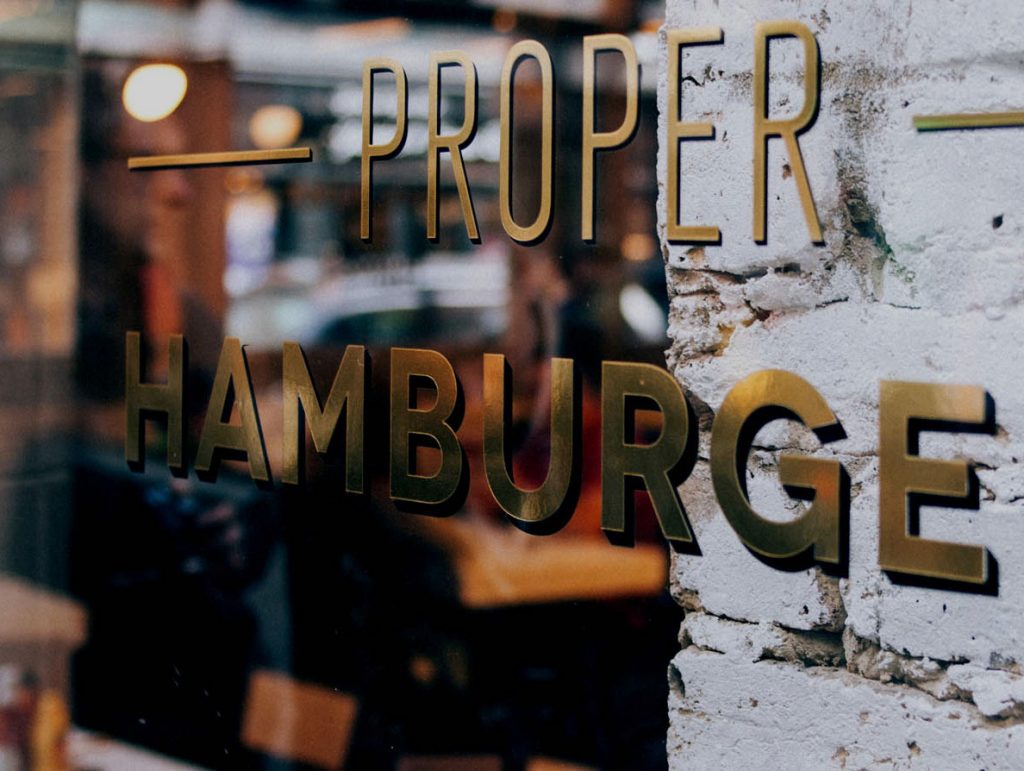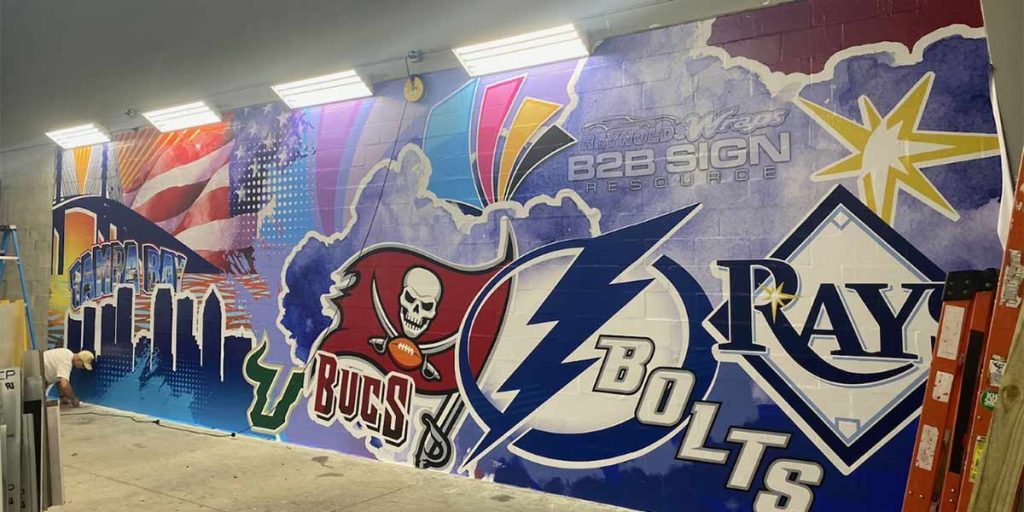Signage That Stands the Test of Time: A Guide to Selecting Lasting Materials

In today’s competitive business landscape, effective signage plays a crucial role in attracting customers and conveying brand messages. From guiding visitors to promoting products and services, signage serves as a powerful marketing tool. However, not all signs are created equal, and choosing the right materials is essential for long-lasting results. A well-designed and durable sign can enhance brand recognition and create a positive image. Conversely, a poorly constructed sign can fade, warp, or deteriorate over time, sending a negative message to potential customers.
Therefore, choosing the right materials is vital for achieving long-lasting results and maximizing the effectiveness of your signage. In this article, we will explore the factors to consider when selecting signage materials and discuss the pros and cons of common options.
But before diving in, if you’re looking for reliable, affordable print and design services, then contact B2B Sign Resource today. We are Clearwater, Florida’s most trusted, experienced designers, and printers of signage and vehicle wraps.
Factors to consider when selecting signage materials
Several factors should be taken into account when deciding on the materials for your signage. These include:
Durability
Durability is a key consideration, particularly for outdoor signs exposed to various weather conditions. The material should withstand rain, wind, sunlight, and temperature fluctuations without deteriorating or losing its visual appeal.
Weather resistance
Different materials have varying degrees of resistance to weather elements. It’s important to choose materials that can endure rain, snow, heat, and humidity without warping, fading, or becoming brittle.
Maintenance requirements
Consider the level of maintenance required for each material. Some signs may need regular cleaning, repainting, or replacement of specific components, while others may require minimal upkeep.
Cost-effectiveness
The budget allocated for signage is another crucial aspect. It’s essential to strike a balance between the cost of materials and the desired lifespan of the sign.
First Impressions Are Essential In Business. Get A Proper Design And Graphics For Your Company!
Common materials used for signage
Various materials are commonly used for signage, each with its own unique characteristics and suitability for different purposes. Let’s explore some of the most popular options:
Wood
Wood signage offers a classic and natural aesthetic appeal. It can be carved, painted, or stained to create custom designs that reflect a rustic or traditional atmosphere. Wood signs are durable, especially when treated with weather-resistant coatings. However, they may require periodic maintenance to prevent warping, cracking, or fading due to exposure to the elements.
Metal
Metal signage provides durability and a sleek, modern appearance. It can be fabricated from aluminum, stainless steel, brass, or copper, offering a range of design possibilities. Metal signs are highly resistant to weather conditions and can withstand prolonged exposure without significant deterioration. However, certain metals may be prone to rust or corrosion if not properly protected.
Plastic
Plastic signage, particularly those made from PVC (polyvinyl chloride) or acrylic, is a cost-effective option suitable for both indoor and outdoor use. Plastic signs are lightweight, easy to install, and highly customizable in terms of size, shape, and color. However, they may be susceptible to fading and cracking over time, especially when exposed to direct sunlight or extreme temperatures.
Glass
Glass signage is renowned for its elegance and modern appeal. It can be etched, frosted, or backlit to create stunning visual effects. Glass signs are often used in upscale establishments or corporate environments. However, glass is fragile and can pose safety concerns, particularly in high-traffic areas. Additionally, glass signage requires regular cleaning to maintain its pristine appearance.
Acrylic
Acrylic signage offers a similar appearance to glass but with enhanced durability. It is lightweight, shatter-resistant, and can withstand various weather conditions. Acrylic signs are often used for outdoor applications, including directional signs, building numbers, or company logos. However, acrylic is prone to scratches, and proper care should be taken during installation and maintenance to preserve its clarity and visual appeal.
Choosing the right material for different types of signage
The appropriate material for your signage depends on its intended purpose and location. Here are some considerations for different types of signage:
Outdoor signage
For outdoor signs, durability, and weather resistance are crucial. Metal signage, such as aluminum, is a popular choice due to its resilience and longevity. It can withstand harsh weather conditions while maintaining its visual appeal. Additionally, PVC or acrylic signs offer a cost-effective alternative, particularly for temporary or promotional signage.
Indoor signage
Indoor signs allow for more flexibility in material selection. Depending on the desired aesthetic and durability, options such as wood, metal, plastic, or glass can be suitable. Consider the overall ambiance of the space and the specific message you want to convey when choosing the material.
Wayfinding signage
Wayfinding signs guide visitors through complex environments such as hospitals, airports, or shopping malls. These signs need to be clear, visible, and durable. Acrylic or metal signs are often used for their visibility and longevity, ensuring that visitors can easily navigate their surroundings.
Retail signage
In retail settings, signage plays a vital role in attracting customers and promoting products. Depending on the branding strategy and target audience, various materials can be used. For a high-end boutique, glass or metal signs can convey a sense of luxury, while plastic signs may be more appropriate for temporary sales or promotional signage.
First Impressions Are Essential In Business. Get A Proper Design And Graphics For Your Company!
Importance of professional guidance in material selection
Selecting the right signage material can be a daunting task, considering the wide range of options available. Consulting with signage experts can provide valuable insights and ensure you make informed decisions. They can assess your specific requirements, budget, and aesthetic preferences to recommend the most suitable materials that align with your goals.
Professional signage experts have extensive knowledge of materials, their durability, and maintenance requirements. They can guide you through the selection process, helping you weigh the pros and cons of each option. With their expertise, you can make a well-informed decision that ensures your signage stands the test of time and delivers the desired impact.
In addition to material selection, signage professionals can also assist with design, installation, and maintenance. They understand the importance of creating visually appealing and engaging signage that effectively communicates your message to your target audience. Their expertise ensures that your signage not only looks impressive but also serves its purpose effectively. If you’re in the Clearwater, Florida area, give a call to us at B2B Sign Resource. We have decades of experience designing and manufacturing high impact signage for businesses across Florida.
By seeking professional guidance, you can save time, avoid costly mistakes, and ensure that your signage investment provides long-lasting results that contribute to your business success.
Summary
Choosing the right materials for your signage is crucial for achieving long-lasting and effective results. Consider factors such as durability, weather resistance, maintenance requirements, and cost-effectiveness when making your selection. Wood, metal, plastic, glass, and acrylic are common materials used for signage, each with its own set of advantages and considerations.
Investing in high-quality signage materials ensures that your signs make a positive impression, withstand the elements, and effectively communicate your brand message. Choose wisely, and your signage will become a powerful asset in attracting customers, enhancing brand recognition, and driving business growth.
Should you be looking for a provider of professionally designed, high-quality signage, you’re already at the right place. B2B Sign Resource is the leader in signage for businesses all over Florida. Contact us today for a free consultation.
FAQs
Q: What is the most durable material for outdoor signage?
A: Aluminum is widely regarded as one of the most durable materials for outdoor signage. It is lightweight, weather-resistant, and can withstand harsh conditions without significant deterioration.
Q: Can plastic signage withstand harsh weather conditions?
A: While plastic signage, such as PVC or acrylic, is generally weather-resistant, its durability may vary depending on the specific material and quality. It’s important to choose high-quality plastic signs and ensure proper installation and maintenance for long-lasting performance.
Q: Is glass signage suitable for high-traffic areas?
A: Glass signage can add an elegant touch to any environment. However, due to its fragility, it may not be the most suitable option for high-traffic areas where accidental impacts or vandalism are more likely to occur.
Q: How often does acrylic signage need maintenance?
A: Acrylic signage requires regular cleaning to maintain its clarity and visual appeal. Depending on the location and environmental factors, periodic inspections and cleaning every few months are generally recommended.
Q: Can metal signage be customized to unique shapes?
A: Yes, metal signage can be customized to unique shapes and designs. Metal fabrication techniques allow for intricate detailing and customization, providing versatility in creating visually striking signs that align with your branding requirements.
Let Us Help You Stand Out From The Rest!
Share your project with us and one of our team members will contact you with the right solution.
Russell is a professional content writer with B2B Sign Resources, where he is responsible for creating informative and engaging written content to help brands promote their products or services. As an experienced content expert, Russell has a proven track record of driving growth and innovation. Outside of work, Russell enjoys trekking and exploring the hills, adding a touch of fun and balance to his life.




